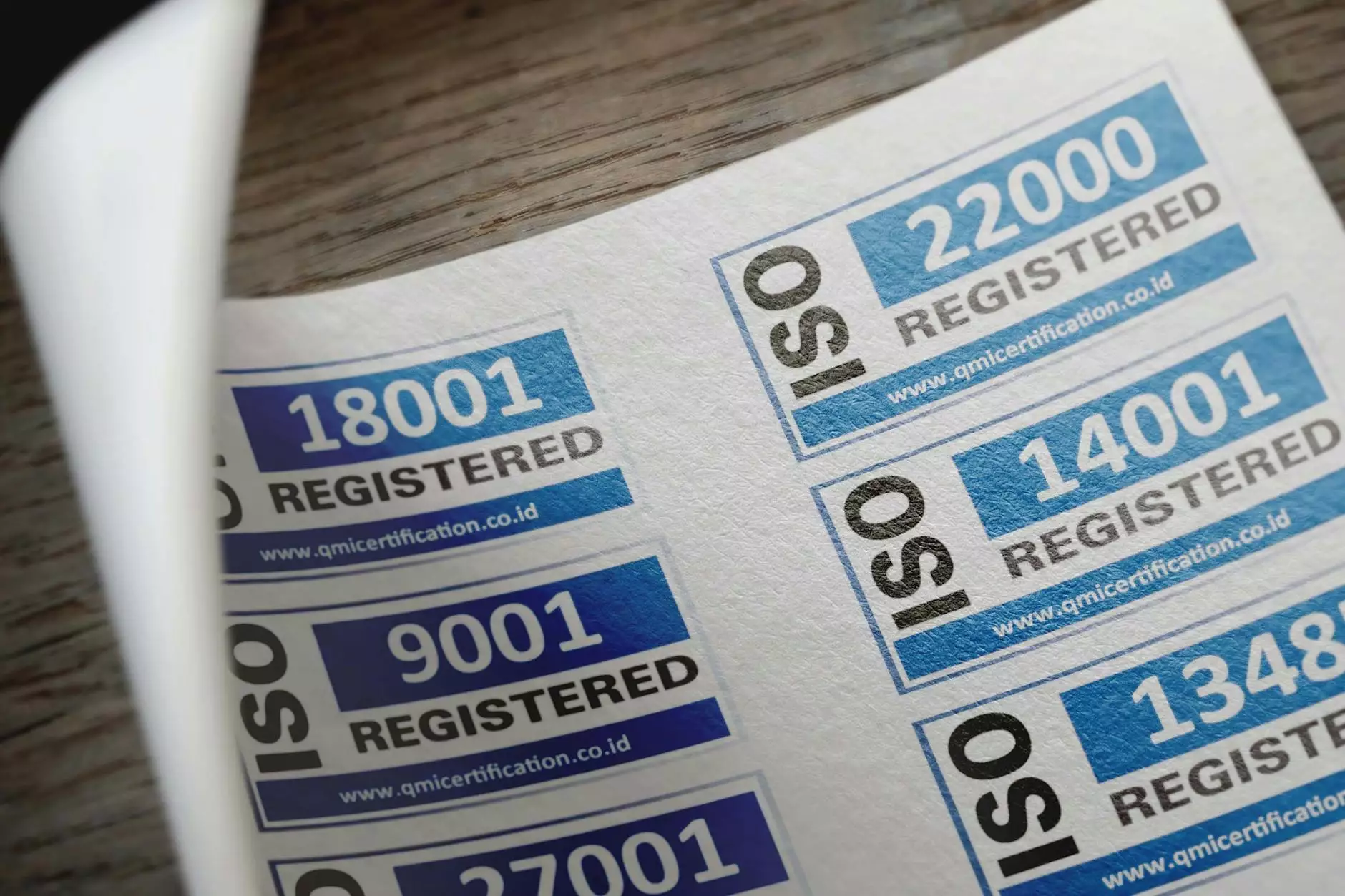Understanding Blood Clots: Can You Get a Blood Clot in Your Ankle?

When hearing about blood clots, many people only consider serious conditions like strokes or heart attacks. However, blood clots can occur in various locations in the body, including the ankles. This article will delve deeply into the question: can you get a blood clot in your ankle? We will address the causes, symptoms, prevention, and treatment methods associated with blood clots, particularly in the ankle region, empowering you with knowledge that can help you identify risks and seek appropriate medical care.
What is a Blood Clot?
A blood clot, or thrombus, is a gel-like mass formed from blood cells and fibrin that disrupts normal blood flow. Blood clots are critical for stopping bleeding when injuries occur. However, when clots form without any injury, particularly in the veins, they can lead to severe health complications.
Types of Blood Clots
There are various types of blood clots, and understanding each type can provide insight into the potential risks:
- Deep Vein Thrombosis (DVT): This occurs when a blood clot forms in a deep vein, commonly in the legs.
- Pulmonary Embolism (PE): This is a life-threatening condition that occurs when a clot breaks loose and travels to the lungs.
- Arterial Thrombosis: This type of clot can occur in arteries and may lead to heart attacks or strokes.
Can You Get a Blood Clot in Your Ankle?
Yes, you can get a blood clot in your ankle. While DVT often occurs in the lower leg or thigh, it can impact the ankle as it is anatomically connected to these areas. Anytime a clot forms in a deep vein, there is a possibility of pain and swelling in the lower leg and, consequently, the ankle region.
Symptoms of a Blood Clot in the Ankle
Recognizing the symptoms of a blood clot in the ankle is crucial for timely medical intervention. Common symptoms include:
- Swelling: Noticeable swelling in one ankle that is not present in the other.
- Pain or Tenderness: Discomfort in the ankle or lower leg, often described as a cramp or ache.
- Discoloration: A change in skin color, appearing reddish or bluish around the affected area.
- Warmth: The affected area feeling warmer than the surrounding skin.
If you experience any of these symptoms, it is essential to seek medical attention immediately.
What Causes Blood Clots in the Ankle?
Blood clots in the ankle often arise from various risk factors, including:
1. Prolonged Immobility
Long periods of inactivity—such as being bedridden or sitting for long times during travel—can slow down blood flow, increasing the risk of clot formation.
2. Injury or Surgery
Any injury or surgical procedure near the ankle can trigger clotting, as the body responds to trauma with increased coagulation.
3. Medical Conditions
Certain medical conditions such as diabetes, obesity, or a history of vascular disease may elevate the risk of blood clots.
4. Hormonal Factors
Hormonal changes, especially during pregnancy or the use of birth control pills, can increase the likelihood of clots forming.
5. Genetic Predisposition
Some individuals may inherit conditions that make them more prone to blood clots, popularly known as thrombophilia.
Diagnosing Blood Clots in the Ankle
To accurately diagnose a blood clot in the ankle, healthcare providers use several diagnostic tools, including:
- Ultrasound: The most common test for confirming DVT. It uses sound waves to visualize blood flow in the veins.
- D-dimer Test: Measures the presence of fibrin degradation products, which may indicate clotting activity.
- CT or MRI Scans: Advanced imaging techniques that can provide detailed images of the veins.
Treatment Options for Blood Clots in the Ankle
If a blood clot is confirmed, treatment may include:
1. Anticoagulants
These medications, such as warfarin or heparin, help prevent the clot from growing and reduce the risk of new clots forming.
2. Thrombolytics
In severe cases, thrombolytics may be used to dissolve the blood clot directly.
3. Compression Stockings
Wearing compression stockings can assist in reducing swelling and boosting blood circulation in the affected ankle.
4. Lifestyle Modifications
Making specific lifestyle changes such as increasing physical activity, maintaining a healthy weight, and staying properly hydrated can also help reduce the risk of future blood clots.
Preventing Blood Clots in the Ankle
Awareness and preventive measures are crucial in combating the risk of blood clots in the ankle:
1. Stay Active
Engaging in regular physical activity can enhance blood circulation and prevent sluggishness in veins.
2. Hydration
Maintaining adequate fluid intake helps maintain blood volume and flow, reducing the likelihood of clotting.
3. Avoid Prolonged Sitting or Standing
If your job requires long periods of sitting or standing, take frequent breaks to walk around and stretch.
4. Manage Weight
A healthy weight can significantly decrease the burden on your vascular system and the risk of blood clots.
5. Regular Check-ups
Especially those at risk, regular health check-ups can catch conditions that may lead to clotting early.
Conclusion
In summary, yes, you can get a blood clot in your ankle, and understanding the implications is vital for your health. Being aware of the symptoms and risk factors can help you identify problems early and seek appropriate medical care. Consult with specialists such as those at Truffles Vein Specialists to get more insight into vascular health and blood clot management.
Prevention is always better than cure. By incorporating healthy lifestyle changes and staying informed, you can significantly decrease your risk of developing blood clots in the ankle and other parts of the body.








